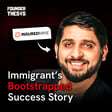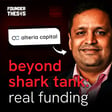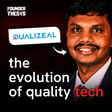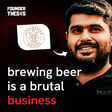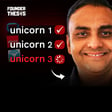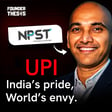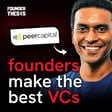
India's Original EdTech: The Untold NIIT Story | Rajendra S. Pawar (NIIT)
"Thank God we didn't have the luxury of venture capital."
In an era where startups burn millions before seeing a single rupee of revenue, Rajendra S. Pawar, founder of NIIT, explains how the necessity of being profitable from the start forced a level of creativity and sustainability that has allowed NIIT to thrive for over four decades.
In this episode, your host Akshay Datt sits down with Rajendra S. Pawar, the co-founder and Chairman of NIIT Limited. An alumnus of IIT Delhi, Mr. Pawar is one of the foundational architects of India's IT education landscape. Over a 40-year journey, he scaled NIIT from a single idea into a global training powerhouse, at its peak operating over 2,000 learning centers across 40 countries. He pioneered the IT education franchising model in India in 1987 and successfully led the company to an IPO in 1993, cementing its place as an institution built to last.
Key Insights from the Conversation:
- The Problem-First Approach: NIIT was born not from a desire to be an entrepreneur, but from identifying a critical bottleneck in the Indian economy: a massive shortage of skilled people to operate computers.
- Partnerships over Franchising: Mr. Pawar details the strategic decision to scale using a "business partner" model, which maintained the entrepreneurial spirit and quality at the local level, a key differentiator from a standard franchising model.
- Customer-Led Evolution: NIIT’s expansion into corporate consulting and software development was a direct result of listening to its clients, who pulled the company into new ventures based on their evolving needs.
- The "Hospital & Medical College" Flywheel: For years, the software business (the "hospital") provided real-world experience that fed directly into the curriculum of the education business (the "medical college"), creating a powerful, self-reinforcing model of practical learning.
- The Art of the Pivot: The conversation provides a masterclass in strategic restructuring, detailing the logic behind demerging highly successful businesses to allow each entity to achieve sharper focus and greater agility.
Chapters:
(00:00) Introduction
(02:15) The Spark: How a Bottleneck at HCL Created NIIT
(08:40) The 'Positive Cash Flow' Startup: Building a Business in 1981
(17:10) Scaling India: Pioneering the Business Partner Model
(25:30) From Training Students to Consulting for India's Top CEOs
(38:05) The GNIIT Revolution: Integrating Education with Industry Internships
(46:55) Going Global, the IPO, & Building 'Software Factories'
(59:18) Deconstruction for Growth: The Logic of Demerging a Successful Business
(1:15:45) A Masterclass in Longevity: Keeping a Founding Team for 40+ Years
(1:28:10) The "Century of the Mind": The Future of Work & Lifelong Learning
Hashtags:
#FounderThesis #RajendraPawar #NIIT #AkshayDatt #StartupIndia #FounderStory #Entrepreneurship #BusinessStrategy #EdTech #Leadership #BuildingToLast #Bootstrapping #IPO #CorporateTraining #BusinessModels #SustainableGrowth
